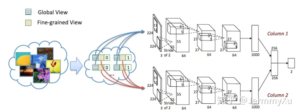I have created and licenced an Open Toolkit for Artistic Learning. I’d like to organise a public event within which to present and run this Open Toolkit that will attract like-minded peers. I’ve heard that “unconferences” are ways of organising such participatory events, but I’m not sure what unconferences are, or how to find out about them. It all seems so daunting. Where should I start?
After the first two barcamp course trainings and tutor exchanges, I’ve pretty much settled on my unconference-based open learning art toolkit. And for participants on how to proceed, here is my barcamp user manual.
Before conducting a barcamp participants should refer to the series of questions given by the organisers and think first, e.g. If a computer as an autonomous conscious being.
1. Do you think a computer can tell when a human is happy or sad? Would a computer be angry if you gave it the finger?
2. what do you think the computer’s aesthetic view of human beings is?
3. do you think we might be tools in the eyes of computers? If so, what kind of tools are we to them? What kind of needs can we satisfy?
4. do you think it is a violation for the computer to look at us every day? Should it close its eyes at the right time? The opposite is true.
This transpersonal approach is inspired by my experience at Calton Hill, which can be found on my THEME course blog:https://blogs.ed.ac.uk/s2339972_themes-in-contemporary-art-2022-2023sem1/2022/11/04/reflective-analysis-beyond-vision/
There is an interesting topic on the aesthetics of computers called photo aesthetic. Critically speaking, is it possible to have a computer do the aesthetics of a picture or not? After all, aesthetics is a very subjective matter, and the definition of beauty itself is not clear, so it seems unrealistic to ask a computer, which needs explicit instructions, to do something that is not even clear to humans.
In terms of data, here is a reference that gives some idea of the underlying theory of photo aesthetic – RAPID: Rating Pictorial Aesthetics using Deep Learning https://dl.acm.org/doi/abs/10.1145/2647868.2654927
This is probably one of the first papers to use deep learning for aesthetic scoring. In image aesthetics, both the overall layout (global) and the details (local) of an image are taken into account. In order for the network to capture both, this paper takes the whole image (global) and feeds it into the network, but also randomly picks out a number of patches from the image (local) and then combines the information from both for classification.

But for me, I would prefer to put myself in the role of a computer in order to make autonomous judgements about beauty (although we can’t be computers, we are humans), to use the eyes of a computer to make judgements and to think, which is what I am doing with this barcamp. Although this is not very rigorous in academic and scientific terms, the aim is to raise awareness of the need to think differently, to reduce the deep-rooted anthropocentrism and to achieve equality and respect.
For the barcamp, participants only need to bring an Apple electronic device capable of airdrop data transfer. Participants can create their own self-portrait through the computer’s eye (I like this because I can use it as a social media avatar), and if they are in motion, they can record themselves swinging their bodies, drinking water or whatever they do most often in front of their computers, which I will send to them via airdrop.
And at the end, we can simply organise a workshop or Q&A where we can answer and reflect on the previous questions, just a very simple informal exchange, don’t be nervous.

Comments
your research into workshops and your own ideas is well thought through and articulated thoroughly on the blog. i like how you have put forth the initial struggles you had about forming idea and how you conquered this. i learnt a lot whilst reading this, about different approaches to learning and ways of engaging. you have taken everything into account of what could happen in the workshop to fully prepare for all possibilities. i like at the end how you mention the goal of the Barcamp, situated within discussion and generating ideas.
I really enjoyed the author’s reflections on how, in the new media age, our lives are filled with screens, but I can rarely think of the relationship between computers and people. The author proposes a very new idea, that when people are looking at screens, the screens are also looking at people.It’s a lot like the saying, “When you’re staring into the abyss, the abyss is staring back at you.” Brilliant, really interesting, thank you for creating and sharing it.